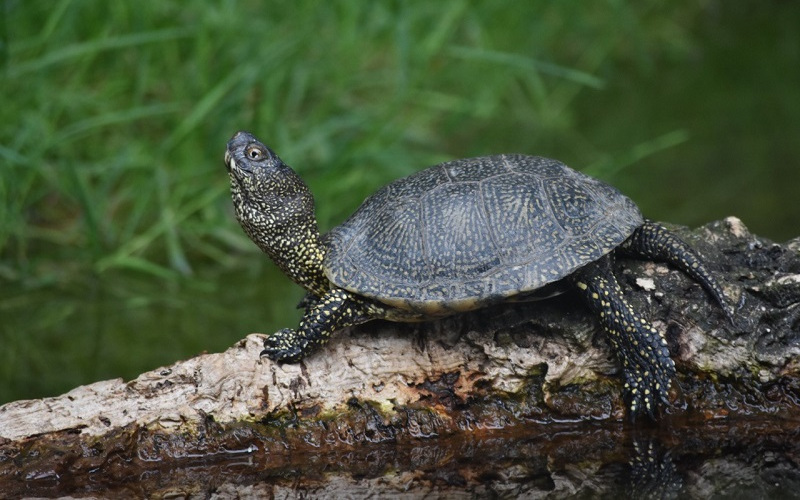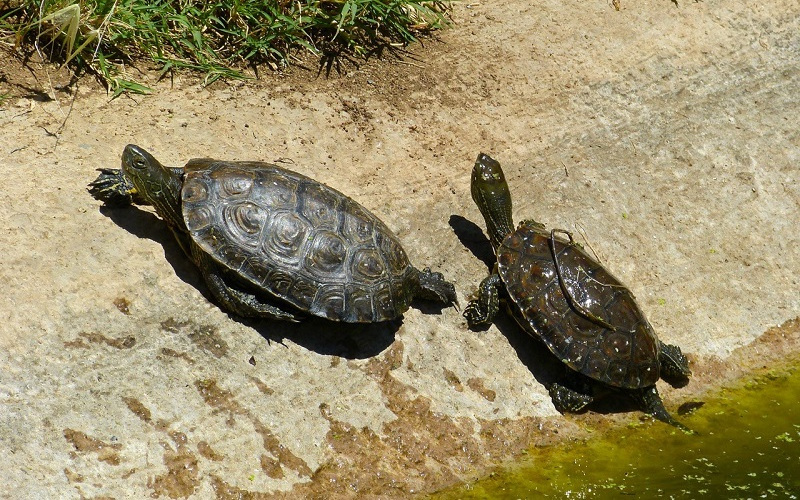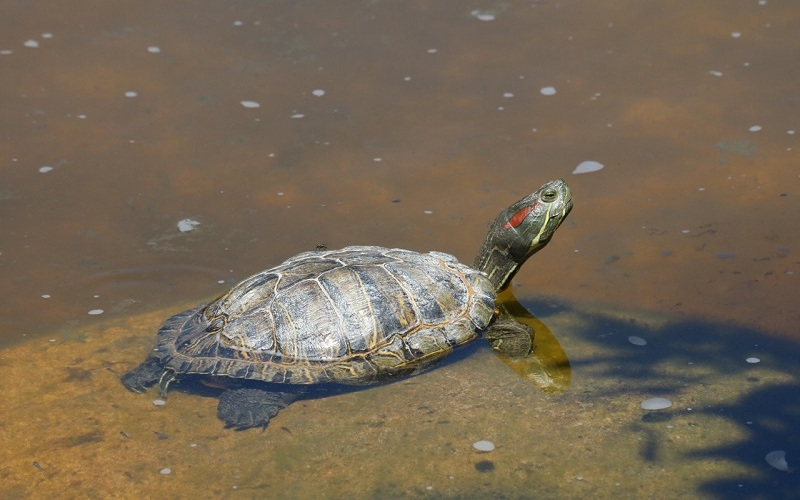

Do tortoises hibernate in Portugal?
During the years when it is coldest in Portugal, when the winter sets in, tortoises trigger a strategy that is crucial to them: hibernation.
José Teixeira, responsible for the Charcos com Vida project and researcher at CIIMAR (Interdisciplinary Centre for Marine and Environmental Research at the University of Porto), explains how two tortoise species from Portugal and an exotic species, the Florida tortoise, spend the coldest months.

These animals “reduce their activity and metabolism to almost zero to protect themselves from the low winter temperatures”, explains José Teixeira.
This strategy is adopted by two species of wild Portuguese tortoises, the striated-shelled tortoise OU the European Pond tortoise? (Emys orbicularis) and the Mediterranean tortoise (Mauremys leprosa), as well as the Florida tortoise, an exotic species. Both young and old tortoises hibernate.
The reason why these reptiles hibernate is simple. According to the expert “as these animals are unable to regulate their body temperature, hibernation is their main strategy to survive at very low temperatures”. There is another advantage: “they do not need to eat during this period, when there is usually less food available”. Before going into hibernation, tortoises prepare themselves. They eat more to accumulate enough fat to last throughout the long dormant period.

Both species of native Portuguese tortoises and the exotic Florida tortoise, can be found in the Gulbenkian Garden. According to José Teixeira, as a rule, the Florida species hibernates for less time than the native species, “which may give them another competitive advantage in relation to our species”. “The vast majority of exotic tortoise species in Portugal are larger and more voracious and aggressive than native species. In the case of the Florida tortoise, they breed when they are younger and in much greater quantity. Thus, people need to realize that they should never release an exotic animal into the wild, as this may create an imbalance and a threat to the conservation of native biodiversity.”
The art of hibernating
When the time is right, tortoises migrate small distances to get away from the wet areas and to hibernate. “They choose safe places to burrow into, or hide under rocks or logs to stay safe”, describes José Teixeira. “To lower their activity during the hottest weather, they choose places to hibernate, often resting at the bottom of ponds or streams where they can keep their body moist.”

Depending on the temperature, tortoises in Portugal can spend between three to six months “sleeping”. For example, in the northern region of Portugal, these amazing animals hibernate for longer periods (possibly for up to six months), while in the southern region, this period is usually shorter (two to four months during the coldest years). In warmer and milder years, they may not even hibernate. That is why one can still spot tortoises even in winter. “On sunny, warm winter days, some tortoises come out of hibernation and can be spotted near wetlands.” However, hibernation is not always beneficial, there is also a price to pay. Therefore, these reptiles need to make decisions.
According to José Teixeira, “the longer the tortoises spend hibernating, the more debilitated they will be when they come out of hibernation. For example, they often move very slowly for several days or even weeks”. “In extreme situations, when hibernation lasts a very long time, this can compromise their reproduction or immune system.” What usually happens is that tortoises go through a period of acclimatization and energy replenishment when hibernation ends and then get on with their lives.
Every month, throughout the year, Wilder magazine unveils some of the phenomena taking place in the Gulbenkian Garden and in the natural world.